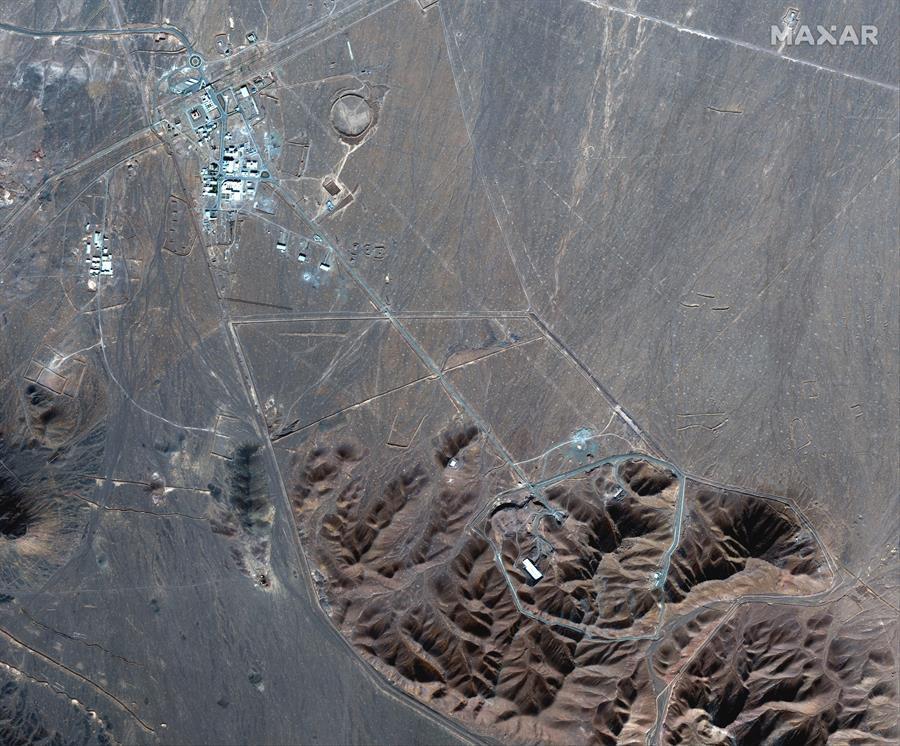
Iran plans to enrich uranium up to 20% at its underground Fordo nuclear facility, international inspectors said on Jan. 2, pushing its program a technical step away from weapons-grade levels as it increases pressure on the West over its tattered atomic deal.
The International Atomic Energy Agency acknowledged Iran had informed its inspectors of the decision after news leaked overnight Friday.
The move comes amid heightened tensions between Iran and the U.S. in the waning days of the administration of President Donald Trump, who unilaterally withdrew America from Tehran’s nuclear deal in 2018. That set in motion an escalating series of incidents capped by a U.S. drone strike killing a top Iranian general in Baghdad a year ago, an anniversary coming Sunday that has American officials now worried about possible retaliation by Iran.
The decision comes after parliament passed a bill, later approved by a constitutional watchdog, aimed at hiking enrichment to pressure Europe into providing sanctions relief. It also serves as pressure ahead of the inauguration of President-elect Joe Biden, who has said he’s willing to reenter the nuclear deal.
“Iran has informed the agency that in order to comply with a legal act recently passed by the country’s parliament, the Atomic Energy Organization of Iran intends to produce low-enriched uranium ... up to 20 percent at the Fordo Fuel Enrichment Plant,” the IAEA said in a statement.
The IAEA added Iran did not say when it planned to boost enrichment, though the agency “has inspectors present in Iran on a 24/7 basis and they have regular access to Fordo.”
Mikhail Ulyanov, Russia’s permanent representative to the Vienna-based IAEA, wrote on Twitter on Friday that Tehran planned to resume enrichment up to 20% after a Wall Street Journal journalist broke the news.
IRNA later reported Ulyanov’s comments, linking the decision to the parliament bill aimed at restarting higher enrichment at Iran’s underground Fordo facility. It also offered no timeframe for starting the higher enrichment.
Alireza Miryousefi, a spokesman for Iran’s mission to the United Nations, called the letter “self-explanatory,” but declined to answer questions about when the 20% enrichment would begin.
Since the deal’s collapse, Iran has resumed enrichment at Fordo, near the holy Shiite city of Qom, some 90 kilometers (55 miles) southwest of Tehran.
Shielded by the mountains, Fordo is ringed by anti-aircraft guns and other fortifications. It is about the size of a football field, large enough to house 3,000 centrifuges, but small and hardened enough to lead U.S. officials to suspect it had a military purpose when they exposed the site publicly in 2009.
The 2015 deal saw Iran agree to limit its enrichment in exchange for sanctions relief. The accord also called for Fordo to be turned into a research-and-development facility.
As of now, Iran is enriching uranium up to 4.5%, in violation of the accord’s limit of 3.67%. Experts say Iran now has enough low-enriched uranium stockpiled for at least two nuclear weapons, if it chose to pursue them. Iran long has maintained its nuclear program is peaceful.
Iran separately has begun construction on a new site at Fordo, according to satellite photos obtained by The Associated Press in December.
Iran’s announcement coincides with the anniversary of the U.S. drone striking Revolutionary Guard Gen. Qassem Soleimani in Baghdad last year. That attack later saw Iran retaliate by launching a ballistic missile strike injuring dozens of U.S. troops in Iraq. Tehran also accidentally shot down a Ukrainian passenger jet that night, killing all 176 people on board.
As the anniversary approached, the U.S. has sent B-52 bombers flying over the region and sent a nuclear-powered submarine into the Persian Gulf.
On Thursday, sailors discovered a limpet mine on a tanker in the Persian Gulf off Iraq near the Iranian border as it prepared to transfer fuel to another tanker owned by a company traded on the New York Stock Exchange. No one has claimed responsibility for the mining, though it comes after a series of similar attacks in 2019 that the U.S. Navy blamed on Iran. Tehran denied being involved.
In November, an Iranian scientist who founded the country’s military nuclear program two decades earlier was killed in an attack Tehran blames on Israel.